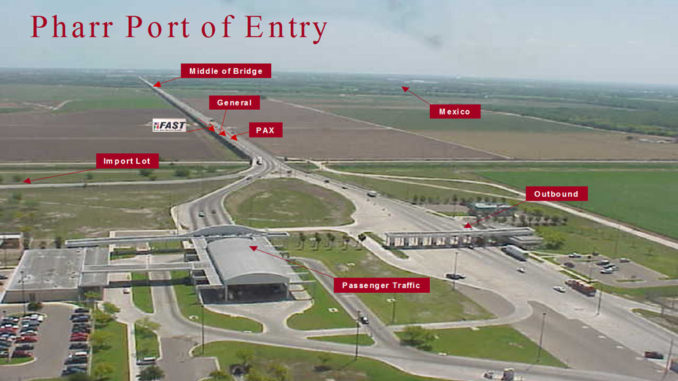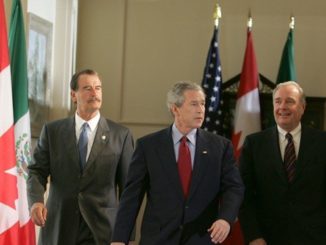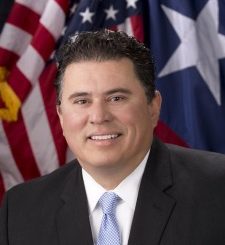
By Kristen Mosbrucker, THE MONITOR
Berry picking season this fall in central Mexico means trucks carrying tons of fresh berries will journey across U.S. border regions destined for grocery store aisles around the country.
But Tony Godinez, a customs broker at the Pharr-Reynosa International Bridge, said that $85,000 worth of berries on one tractor-trailer can only last so long after plucked from plants, and wait times at the border can decrease their shelf life.
“It’s the same thing when there are mushy berries at the bottom of the carton in your refrigerator,” he said of when trucks with 40,000 pounds of produce sit in the hot sun for hours on an international bridge.
About 40 percent of all fruits and vegetables consumed in the U.S. come from Mexico, nearly half of which enter through Texas, according to the Texas International Produce Association.
Industry representatives and city leaders bellied up to the witness stand at the McAllen Convention Center to give testimony in a public hearing Tuesday to the Texas House Committee on Agriculture and Livestock to explore reasons for long wait times at the Pharr-Reynosa bridge and along the border region.
Keith Patridge, CEO of the McAllen Economic Development Corp., said that alleviating wait times are not just good for business but it could make it easier for his group to negotiate and bring jobs to the region.
“Before [the last Legislative session] we started getting a number of companies coming in and telling us they were looking at moving or expanding operations in our area from the traditional crossing point in Nogales,” Patridge said about the border crossing in Arizona, citing talks with 11 companies and up to 1,500 jobs at stake. “We’re just trying to do business here.”
Overall, truck crossings at the Pharr-Reynosa bridge reached almost 500,000 in 2013, said officials, who did not break down how many transported produce. The Texas A&M University’s Center for North American Studies conducted a 2013 report on the future of produce at the bequest of the industry and estimated by 2020 Texas could see 360,000 trucks full of produce, up from 160,000 annually.
Since the recent opening of the Mazatlan to Matamoros “superhighway,” dubbed Supervia, trade is expected to increase exponentially. The city of Pharr widened the northbound lanes from the bridge in 2009 and designated Free and Secure Trade (FAST) lanes, but representatives of the produce industry said it wasn’t enough.
“It’s not uncommon for our trucks to be held for four to six hours,” Paul Heller, of Paramount Citrus, said at the hearing.
Joaquin Spamer, president of Mission-based Colimar International Logistics, a transportation company that deals with trucking Texas cotton into Mexico, said the frustration runs both ways.
“The exports of Texas agricultural products are affected by our trucks not getting across,” Spamer said of his trucks that make a loop north and south importing and exporting goods including seeds, grains and poultry.
Others said the issue was the lack of produce inspectors in the Rio Grande Valley.
“The problem that we have at the port is the lack of USDA inspectors. We have one inspector but he can’t work 16 hours a day,” said Sam Vale, president of the South Texas Assets Consortium, which represents international bridges on the Texas border with Mexico.
Vale suggested the produce industry could help form a public-private partnership with the state and federal government and pay their share of the extra personnel burden to reduce wait times.
One U.S. Department of Agriculture entomologist was hired for the Pharr-Reynosa bridge in March and is on site two days out of the week, officials said. Even still, insects found in produce shipments at the Pharr-Reynosa bridge must be driven to the Los Indios Center near Harlingen for identification.
At the hearing, up to $1 million of investment was projected for more staff inspectors at the Pharr-Reynosa bridge alone but it remains a muddled issue since an international border would need input from the federal government.



